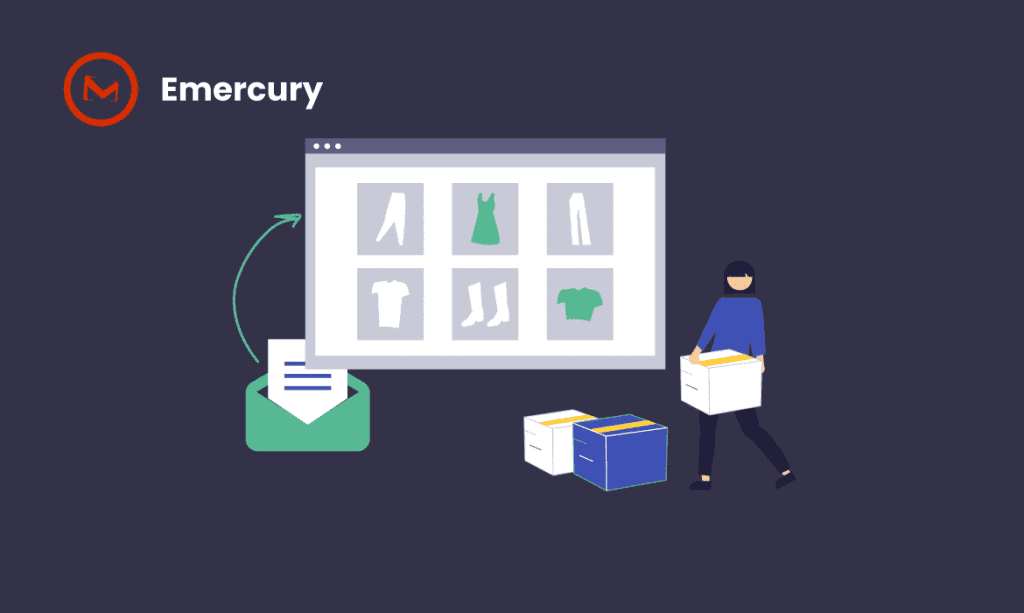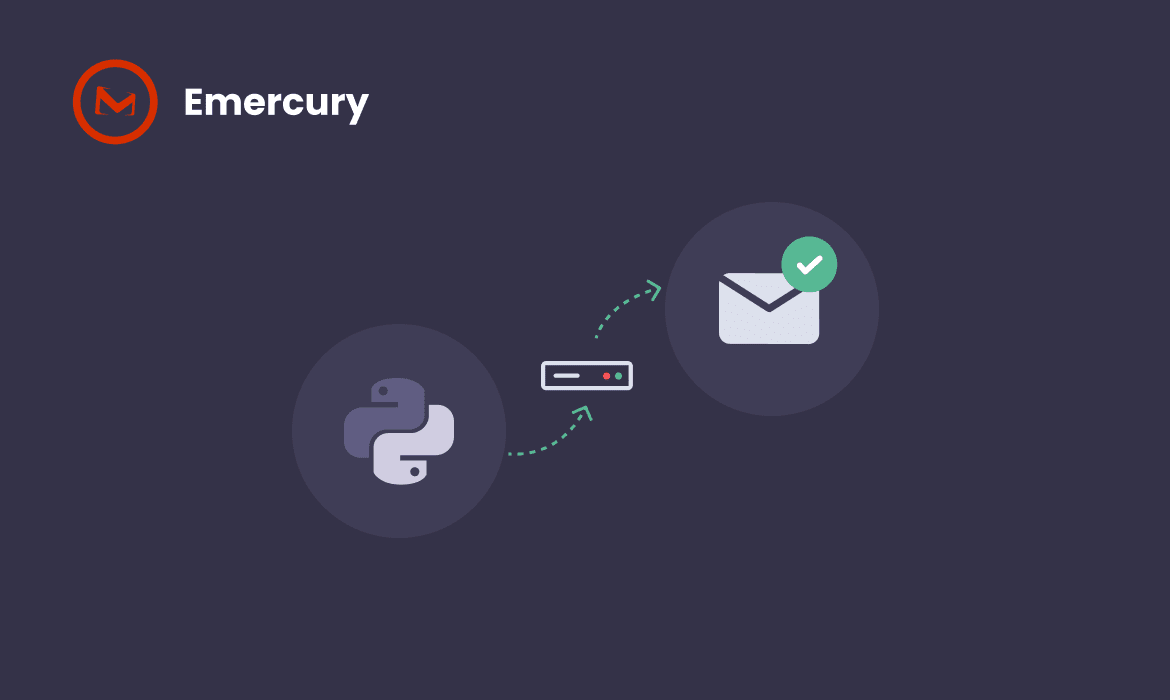Did you know that 21% of legitimate marketing emails never reach the inbox? For ecommerce brands, this means one in five potential sales opportunities vanish before customers even see them.
The math is simple – when promotional emails, order confirmations, and shipping updates fail to reach customers, sales suffer. Poor email deliverability directly impacts an ecommerce store’s bottom line through missed revenue opportunities and damaged customer relationships.
Many online retailers struggle with this challenge. Their marketing campaigns end up in spam folders, order confirmations get delayed, and abandoned cart reminders never arrive. These delivery issues create frustrated customers and lost sales.

This guide breaks down proven strategies to improve email deliverability for ecommerce businesses. From proper authentication setup to list maintenance best practices, these techniques help ensure marketing and transactional emails consistently reach customer inboxes.
Why Email Deliverability Impacts Your Ecommerce Revenue
Email deliverability directly impacts an ecommerce business’s revenue potential. In the United States alone, poor email deliverability costs businesses over $59.5 billion annually.
Understanding Revenue Loss from Poor Deliverability
For ecommerce businesses, every undelivered email represents a missed opportunity. The average deliverability rate stands at 84.6%, meaning nearly 15% of potential sales communications never reach customers. This impacts various types of emails:
- Order confirmations and shipping updates
- Cart abandonment reminders
- Product recommendations
- Promotional offers
- Customer service communications
Key Metrics That Affect Your Bottom Line
The financial impact varies significantly across industries. The retail sector loses approximately $131.2 million annually due to poor deliverability.
Several key metrics directly influence revenue:
Bounce Rate: A high bounce rate indicates email list quality issues, resulting in wasted marketing spend and lost opportunities.
Spam Complaints: When emails exceed 0.1% spam complaint rate, future messages are more likely to be filtered to spam folders.
Engagement Metrics: Low open rates (below 33%) signal potential deliverability issues that directly impact sales conversion.
Calculating the Cost of Spam Folder Placement
The revenue impact of poor deliverability compounds over time. With the average revenue per email at $0.11, businesses can calculate their potential losses:
For example, if an ecommerce store sends 100,000 marketing emails monthly, and 15.4% fail to reach inboxes, that represents 15,400 missed opportunities each month. This translates to significant revenue loss, considering the average conversion rates and purchase values.
Poor authentication and list hygiene practices lead to increased spam folder placement. When emails land in spam folders, they have virtually no chance of converting into sales. This creates a downward spiral where poor deliverability leads to lower engagement, which further damages sender reputation and future delivery rates.
Setting Up Authentication for Your Ecommerce Domain
Proper email authentication serves as the foundation for successful ecommerce email deliverability. Email authentication protocols help verify sender identity and protect both merchants and customers from email fraud.
Essential Authentication Protocols
Three core authentication protocols work together to secure email communications:
- SPF (Sender Policy Framework): Verifies authorized IP addresses for sending emails from a domain
- DKIM (DomainKeys Identified Mail): Adds encrypted signatures to verify message integrity
- DMARC (Domain-based Message Authentication): Builds on SPF and DKIM to prevent domain spoofing
Step-by-Step Implementation Guide
Implementing authentication for an ecommerce domain requires careful setup:
- Configure SPF records in DNS settings to specify authorized sending servers
- Generate and implement DKIM keys (minimum 1,024 bits recommended)
- Create DMARC policy starting with monitoring mode
- Publish authentication records in domain DNS
- Verify proper configuration using authentication checkers
Monitoring Authentication Health
Regular monitoring ensures continued protection and optimal deliverability. Studies show that maintaining active authentication monitoring can significantly improve delivery rates.
Email authentication health requires attention to several key areas:
Authentication Status: Track SPF, DKIM, and DMARC results for each send to identify potential issues quickly.
Compliance Reports: DMARC provides valuable data about email streams and helps identify unauthorized domain usage.
Configuration Alerts: Set up notifications for any authentication changes or compliance deviations.
Starting February 2024, major email providers like Gmail and Yahoo implemented new sender requirements, enforcing proper authentication for bulk senders. This makes implementing these protocols essential for ecommerce businesses sending marketing and transactional emails.
Optimizing Transactional Emails for Better Delivery
Transactional emails represent a crucial touchpoint in the ecommerce customer journey. These automated messages achieve open rates between 40-50%, significantly higher than standard marketing emails.
Order Confirmation Email Best Practices
Order confirmation emails require immediate delivery to build customer trust. These messages see open rates as high as 114% due to multiple opens by the same user. Successful order confirmations include:
- Clear order details and tracking information
- Personalized thank-you message
- Product images and specifications
- Customer support contact options
- Mobile-optimized design
Adding a simple “thank you” in the subject line can increase open rates by 35%.
Shipping Notification Optimization
Shipping notifications help reduce “Where’s my order?” inquiries while maintaining customer engagement. These updates achieve click-through rates of 20.8%, significantly higher than the 3% industry average for bulk emails.
Effective shipping notifications should include real-time tracking updates, estimated delivery dates, and package details. Including product recommendations in shipping confirmations can increase revenue by up to 20%.
Payment Receipt Delivery Success
Payment receipts serve as both transaction records and engagement opportunities. The average revenue per optimized receipt email can reach $5.83, compared to just $0.53 for standard bulk emails.
To maximize delivery success:
- Send receipts immediately after purchase
- Include complete transaction details
- Optimize for mobile viewing (36.6% of opens occur on mobile)
- Add social sharing options
Including social media links in receipt emails can boost click-through rates by 55%. Additionally, incorporating product recommendations based on purchase history can significantly increase repeat purchase rates.
Creating High-Converting Email Content
High-converting email content forms the backbone of successful ecommerce marketing campaigns. Email marketing delivers an exceptional ROI of $36 for every $1 spent, making it crucial for online retailers to optimize their content strategy.
Product Recommendation Email Templates
Personalized product recommendations can increase email click-through rates by 175% and boost conversion rates by 30%.
Successful recommendation emails include:
- Product images with detailed descriptions
- Social proof and customer reviews
- Personalized suggestions based on browsing history
- Clear call-to-action buttons
- Related product bundles
Cart Abandonment Email Strategies
With cart abandonment rates between 60-85%, recovery emails present a significant opportunity. These campaigns can recover between 5-11% of otherwise lost sales.
Effective strategies include:
- Send the first reminder within 2-4 hours
- Include product images and details
- Offer limited-time incentives
- Add social proof elements
- Use clear, compelling CTAs
Promotional Email Guidelines
Seasonal and promotional campaigns require careful timing and structure.
The optimal promotional sequence consists of three key messages:
Pre-sale Email: Build anticipation and excitement about upcoming offers. Include countdown timers and preview exclusive deals.
Launch Announcement: When the sale goes live, clearly communicate discount levels and duration. Highlight essential details and include personalized product recommendations.
Urgency Reminder: Send a final reminder hours before the sale ends. Use phrases like “Tomorrow is too late” to create urgency.
For maximum impact, promotional emails should incorporate varying discounts for different products and emphasize limited-time offers. Including personalized recommendations in newsletters has shown to increase click-through rates by up to 840%.
Maintaining a Clean Ecommerce Email List
Maintaining a pristine email list is crucial for maximizing deliverability in ecommerce. Studies show that regularly cleaned email lists can achieve up to 50% higher open rates.
Customer Segmentation Strategies
Effective segmentation helps deliver targeted content to the right audience.
Ecommerce brands can segment their lists based on:
- Purchase history and frequency
- Browse and cart abandonment behavior
- Geographic location
- Email engagement levels
- Customer lifetime value
- Acquisition source
Segmented email campaigns consistently outperform unsegmented ones, producing 30% more email opens and 50% more click-throughs.
Automated List Cleaning Processes
Regular list cleaning is essential for maintaining high deliverability rates.
Ecommerce brands should implement automated processes to remove:
- Invalid or bounced email addresses that exceed 2% bounce rate. This helps maintain a strong sender reputation with email service providers. Duplicate entries and role-based accounts (like info@ or support@) should also be eliminated.
The cleaning frequency depends on list size. Large email lists (100,000+ subscribers) require monthly cleaning, while smaller lists can maintain quarterly schedules.
Re-engagement Campaign Setup
For subscribers showing signs of disengagement, a structured re-engagement campaign is essential.
Here’s an effective process:
- Create separate segments for unengaged purchasers and non-purchasers
- Send personalized content featuring latest products
- Include preference update options
- Monitor response rates for 120 days
- Remove non-responsive subscribers
Successful re-engagement campaigns typically achieve open rates above 10%. For maximum impact, businesses should consider offering incentives like discounts or free shipping to reconnect with inactive subscribers.
Email verification tools can automate much of this process, helping ecommerce brands maintain list hygiene while focusing on growth. Regular maintenance combined with strategic segmentation creates a foundation for successful email deliverability and higher conversion rates.
Building Trust with Email Authentication
Trust signals play a vital role in establishing credibility for ecommerce email communications. Implementing robust authentication protocols helps businesses protect their brand while ensuring reliable email delivery.
DMARC Implementation for Ecommerce
DMARC implementation provides a framework for protecting domain reputation and improving email deliverability. For ecommerce businesses, DMARC offers several key advantages:
- Prevents unauthorized use of domain names
- Improves email marketing campaign delivery by 5-10%
- Provides detailed reporting on email authentication results
- Helps maintain compliance with privacy regulations
The implementation process requires careful monitoring and adjustment. Starting with a ‘p=none’ policy allows businesses to observe results without affecting delivery. As authentication success improves, merchants can strengthen their policies to ‘quarantine’ or ‘reject’ unauthorized emails.
Brand Indicators for Message Identification
BIMI represents the next evolution in email authentication, offering visual trust signals to recipients.
This protocol allows ecommerce brands to:
- Display verified logos next to emails in recipients’ inboxes
- Increase brand recognition and trust
- Reduce the risk of phishing attacks
- Improve email engagement and open rates
To implement BIMI, businesses must meet specific prerequisites:
- Obtain a Verified Mark Certificate
- Create correctly formatted logos
- Set up proper DNS records
- Ensure email authentication compliance
Sender Reputation Management
Maintaining a positive sender reputation is crucial for successful email delivery. Email providers determine reputation based on multiple factors that directly impact deliverability.
Key aspects include:
Monitoring Tools: Implement systems to track authentication status and compliance reports.
Data Quality: Maintain clean email lists with legitimate addresses and engaged recipients.
Authentication Protocols: Ensure proper configuration of SPF, DKIM, and DMARC.
Engagement Metrics: Track and optimize open rates, click-through rates, and spam complaints.
Sender reputation directly influences email placement, with poor reputation leading to decreased deliverability rates and potential blocklisting. Regular monitoring helps identify and address issues before they impact delivery success.
For optimal results, ecommerce businesses should:
- Monitor authentication reports daily
- Address compliance issues promptly
- Maintain consistent sending patterns
- Review engagement metrics regularly
Starting February 2024, major email providers will require proper authentication for bulk senders. This makes implementing comprehensive authentication protocols essential for ecommerce businesses looking to maintain strong deliverability rates and protect their brand reputation.
Conclusion
Email deliverability stands as a critical factor for ecommerce success. Businesses must prioritize proper authentication setup, maintain clean email lists, and optimize both transactional and marketing communications to maximize inbox placement.
Strong authentication protocols protect brand reputation while ensuring reliable delivery rates. Regular monitoring of key metrics, combined with strategic list maintenance, helps ecommerce stores maintain high deliverability standards and drive consistent revenue growth.
Smart email deliverability practices directly impact sales performance. Ecommerce brands that implement these strategies see improved open rates, higher engagement, and increased conversion rates from their email campaigns.
Remember, successful email deliverability requires ongoing attention and optimization. Merchants who consistently apply these best practices position themselves for long-term ecommerce growth through effective email communication with their customers.
FAQ:
- What is email deliverability in ecommerce?
Email deliverability refers to the ability of your emails to successfully reach customers’ inboxes without being flagged as spam. - Why does poor email deliverability impact ecommerce revenue?
Poor deliverability leads to undelivered emails, resulting in missed sales opportunities and damaged customer relationships. - What are the key factors affecting email deliverability?
Factors include authentication protocols, bounce rates, spam complaints, email engagement metrics, and sender reputation. - How can I improve email deliverability for my ecommerce store?
Use proper email authentication (SPF, DKIM, DMARC), maintain a clean email list, and optimize email content for engagement. - What are authentication protocols, and why are they important?
Authentication protocols like SPF, DKIM, and DMARC verify sender identity and protect emails from being flagged as spam or fraudulent. - How do transactional emails differ from marketing emails?
Transactional emails are triggered by customer actions (e.g., order confirmations), while marketing emails promote products or services. - What is the impact of poor sender reputation on email deliverability?
A poor sender reputation increases the likelihood of emails being flagged as spam, reducing inbox placement rates. - How often should I clean my ecommerce email list?
Large lists should be cleaned monthly, while smaller lists can be cleaned quarterly to maintain high deliverability rates. - What is DMARC, and how does it improve email deliverability?
DMARC prevents unauthorized use of your domain and provides detailed reports on email authentication results, improving deliverability. - Can personalization improve email engagement rates?
Yes, personalized emails boost engagement by providing relevant content, increasing open and click-through rates.



